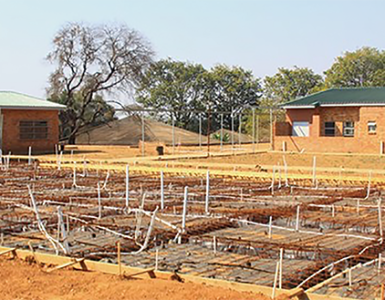SPECTRE: Bad working conditions, stagnant salaries, workload, staff shortages and professional exodus signal deepening global crisis…
By Disha Shetty and Len Maseko
Increased violence against health care workers, poor pay, and exhaustion are driving many nurses to leave the profession altogether across the world.
This shock trend is revealed in a new report released this week by the International Council of Nurses (ICN), which has warned of a deepening crisis in the global nursing workforce. The ICN comprises over 130 national nurses’ associations (NNA) representing millions of nurses worldwide. It highlights enormous challenges faced by the nursing profession currently.
Nearly half of the world’s national nursing associations (48.4%) have signalled a significant increase in nurses’ migration or exodus from the profession since 2021, according to the report. This was the dire consequences of stagnant salaries, poor health system performance, and growing violence directed at nurses, along with a continually increasing workload.
The World Health Organization (WHO) has indicated that the world needs nearly 6 million more nurses by 2030 to deliver the higher standards of healthcare.
The report, titled “Our Nurses. Our Future. Caring for Nurses Strengthens Economies”, is complemented by a survey of 68 nursing associations conducted between 2021 and 2024. It shows that around 72.1% of the associations reported little or no increase in nursing salaries since 2021, including in more affluent OECD (Organisation for Economic Cooperation and Development) countries. OECD generally refers to 38 member states categorised as developed, high-income, democratic nations with free-market economies.
When accounting for inflation, over one-third, or 36.4%, of NNAs indicated that nurses had effectively experienced a decrease in salary in real terms.
Releasing the new findings, ICN president Pamela Cipriano said: “A shocking 86.2% of nurses’ associations reported experiences of violence from patients or the public, yet a third of countries had no policies in place to protect nurses from workplace violence”.
These findings come against a background of growing demands on nurses in their day-to-day duties since the height of the pandemic in 2021 – as reported by some 61.7% of nursing associations.
Cipriano said the report showed that “many of the world’s nurses are at breaking point, pushed into burnout and facing enormous physical, mental, and emotional pressures”, adding: “Unacceptable working conditions, inadequate compensation, and a failure to protect nurses from workplace violence and occupational hazards or provide opportunities to advance and practice at full scope are driving this crisis, which affects not only nurses but the health of entire populations”.
Some 38% of national nursing associations rate their country’s capacity to meet current healthcare needs as “poor” or “very poor”, the survey of NNAs also found – partly as a result of the cumulative pressures on the nursing workforce and their exodus.
Along with low pay, various threats to safety while at work are among the key issues nurses face, she added.
“The survey results also underscore a failure to protect nurses’ safety. Our report highlights how direct attacks on nurses and healthcare workers in conflict settings have also dramatically increased.”
Outside of conflict settings, however, violence directed against nurses is often a result of the frustration patients and their caregivers have towards the health systems, as many nurses work in resource-poor settings. In India, for instance, violence against healthcare professionals is a huge issue, often linked to the over-extended public healthcare system.
The report flags a range of solutions, including calling for:
· Investment in the right resources and equipment, safe and decent working conditions, and training support for nurses;
· Improving work culture so that nurses can thrive in a supportive environment;
· Improvement of access to healthcare for healthcare professionals themselves;
· Fair pay and competitive compensation for nurses; and
· Removal of barriers to health care access for nurses by streamlining pathways to ensure easy, timely access to preventive care, treatment and support services, including ensuring these services are readily available and designed to meet nurses’ unique needs.
Poor health among health care workers accounts for approximately 2% of national health care expenditure on average, draining valuable resources, according to the findings. Global shortage of nurses reaching record numbers. The report makes an economic case for investing in more nurses, as well as increasing their well-being.
“For nurses, improving their health and resource allocation could boost health workforce productivity by as much as 20%, which directly translates into cost savings and improved health care delivery,” it states.
ICN CEO Howard Catton said, despite mounting evidence of the nursing workforce crisis, many leaders and decision makers continued to prioritise short-term solutions over the sustainable investments needed to address the root causes of the health workforce emergency.
Fundamental to that was the growing shortage of nurses, he added.
“We have clear evidence that supporting and caring for nurses is not a cost: it is a smart and strategic investment in the health and prosperity of all people, with the total potential value of initiatives to improve nurses’ wellbeing is estimated at $100-300 billion based on capturing lost workforce productivity alone,” Catton said.
He said the estimates are based on the World Economic Forum & McKinsey’s 2025 Thriving Workplaces report, which estimated that investing in workers’ health, more broadly, could unlock some $11.7 trillion in global economic returns.
“Extrapolating those figures to the proportional size of the nursing workforce, we get a possible opportunity value of $100-$300 billion, in increased economic returns,”
Catton said, framing those as reduced sick leave and attrition, absenteeism, etc. Numerous case studies show that investments in nurses’ health can yield clear economic returns.
“There is no concrete number put on the amount of investment required to bring about these benefits, however we do know that there is a strong return on investment on investing in nursing and in health: studies show that every dollar invested in health systems can generate a $2-$4 return,” Catton added.
ICN has said it will continue to push for increased protections for nurses at the upcoming World Health Assembly, May 19 to 27, where member states will consider the extension of a global strategy on “Nursing and Midwifery”, currently scheduled to expire this year.
WHA will also include discussions on the Global Strategy on Human Resources for Health: Workforce 2030 and the most recent results of country compliance with the WHO Global Code of Practice on the International Recruitment of Health Personnel, which was released and reviewed at the WHO Executive Board in February. – Health Policy Watch and Weekly SA Mirror
HANDS OFF ‘OUR NURSES’ — SANC
SCOURGE: Earlier study recorded a worrying rise in the attacks against healthcare workers over a decade between 2012 and 2022…
By Len Maseko
Health workers were often subjected to violence in the workplace – mostly by people connected to their patients, a study conducted by the SA Medical Association found in 2022.
The study found that violence was perpetrated against doctors, nurses and paramedics at various sites, including at private surgery rooms, parking lots, wards and hospital residences.
The study revealed that these healthcare workers were subjected “to all forms of violence by patients and their relatives” while almost all attackers of paramedics were strangers. At the time, it recorded a rise over a decade (2012 -2022), mainly in the public sector.
“Reasons for attacks centred on unmet expectations from family members of the patient, namely perceived poor care or demise of the patient as well as crime aimed at financial benefiT. Perpetrators of attacks against paramedics were seeking financial benefit from the stealing of valuables from their victims,” the study added.
Notably, both developed and developing countries were experiencing this epidemic of workplace violence in the healthcare sector during a decade that overlapped onto the Covid-19 pandemic. According to a report by Lancet, violence against healthcare workers also specifically rose during the COVID-19 pandemic.
Meanwhile, the SAMA study recommended the implementation of “evidence-based policies and practical interventions for the health sector, noting that these interventions must include a multi-sectoral, multi-stakeholder approach that goes beyond the health sector”.
In January this year, the South African Nursing Council (SANC) expressed dismay and outrage at the continuing spate of violence against nurses in the country. The statement followed a spate of attacks on health workers, including the January violent attack on two nurses in Limpopo.
Reacting to the scourge, SANC chairperson Dr MC Molepo said: “It is appalling that nurses are threatened and improperly assaulted whilst performing professional duties, by serving their communities. The protection of nurses should be at the forefront of health managers in our country where the shortage of nurses is a major concern.
“What the perpetrators in this country do not seem to understand is that nursing is not only a critical skill, but a scarce critical skill, and that often these nurses in villages are the communities’ only answer to healthcare. This was another eye-opener about the crime levels in this country that are out of hand and seemingly ignored at the cost of those who least deserve it. As the SANC we are saying: Hands off our nurses!”
The Ministry of Health has previously condemned acts of violence and disruption targeting healthcare facilities, including those harming nurses, and pledged to work with law enforcement and other authorities to ensure the safety and security of health workers and patients..
At its annual congress last month, the Democratic Nursing Organisation of SA (Denosa) cast the spotlight on the dire shortage of nurses and working conditions in the health sector. Denosa passed a resolution emphasising “the urgent need to address the severe shortage of nurses, the failure to absorb community service nurses, and the growing strain on healthcare workers due to understaffing”.
Denosa said it would continue to push for the immediate employment of nurses and a better working environment, including fair and decent salaries.
Other resolutions included:
· Recognising that nurses are the backbone of South Africa’s healthcare system, the Congress reaffirmed the call for just and competitive remuneration that reflects the value of their work.
· Ensuring a safe working environment – Denosa remained steadfast in its demand for improved workplace safety, calling for stronger protections against violence and crime targeting nurses while on duty.
· Transforming nursing education – the congress resolved to push for a review of the nursing education system to better align it with the country’s comprehensive healthcare needs.
It also addressed the thorny issue facing greater society – gender-based violence (GBV) – adding that it acknowledged the disproportionate impact of gender-based violence on nurses and healthcare workers.
“We resolve to intensify its efforts in championing gender equality and workplace safety,” added the congress resolution.
In addition to denouncing GBV and sexual harassment in the workplace, it urged for the curbing of GBV in South African communities, adding “we need to find collective ways of addressing this issue”.


































